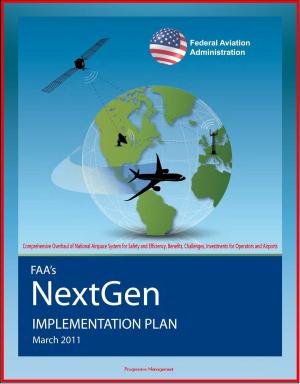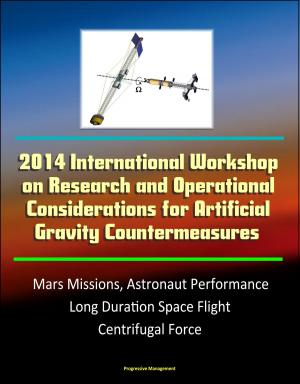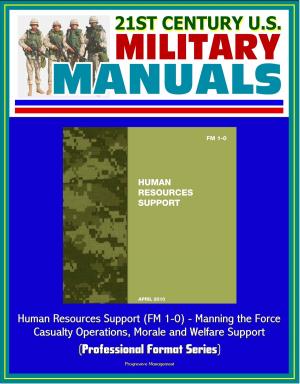The Wind and Beyond: A Documentary Journey into the History of Aerodynamics in America, Volume 1 - The Ascent of the Airplane
Nonfiction, Reference & Language, Transportation, Aviation, History, Science & Nature, Technology, Aeronautics & Astronautics| Author: | Progressive Management | ISBN: | 9781476438375 |
| Publisher: | Progressive Management | Publication: | July 17, 2012 |
| Imprint: | Smashwords Edition | Language: | English |
| Author: | Progressive Management |
| ISBN: | 9781476438375 |
| Publisher: | Progressive Management |
| Publication: | July 17, 2012 |
| Imprint: | Smashwords Edition |
| Language: | English |
Airplane travel is surely one of the most significant technological achievements of the last century. The impact of the airplane goes far beyond the realm of the history of technology and touches upon virtually every aspect of society, from economics to politics to engineering and science. While space exploration often claims more public glory than aeronautics research, many more individuals have been able to fly within the Earth's atmosphere than above it. Thus, aeronautics and air travel have had an enormous practical impact on many more individuals.
Dr. James R. Hansen and his collaborators do more than just document the last century of flight. They go back and expertly trace the historical origins of what made the first heavier-than-air, controlled, powered airplane flight possible on 17 December 1903. Some names covered in this volume, such as Isaac Newton and Leonardo da Vinci, are familiar to even the most casual reader. Other heralded, but less well-known, early pioneers of flight such as George Cayley, Otto Lilienthal, Theodore von Karman, and Theodore Theodorsen will come alive to readers through their original letters, memos, and other primary documents as they conjoin with the authors' insightful and elegantly written essays.
This first volume covers the impact of aerodynamic development on the evolution of the airplane in America. Just as the airplane is a defining technology of the twentieth century, aerodynamics has been the defining element of the airplane. The documents collected during this research project were assembled from a diverse number of public and private sources. A major repository of primary source materials relative to the history of the civil space program is the NASA Historical Reference Collection in the NASA Headquarters History Office. Historical materials housed at NASA field centers, academic institutions, and Presidential libraries were other sources of documents considered for inclusion, as were papers in the archives of private individuals and corporations. Each section in the present volume is introduced by an overview essay that is intended to introduce and complement the documents in the section and to place them in a chronological and substantive context. Each essay contains references to the documents in the section it introduces, and many also contain references to documents in other sections of the collection. These introductory essays are the responsibility of Dr. Hansen, the series' author and chief editor, and the views and conclusions contained therein do not necessarily represent the opinions of either Auburn University or NASA. The documents included in each section were chosen by Dr. Hansen's project team from a much longer list initially assembled by the research staff. The contents of this volume emphasize primary documents, including long-out-of-print essays and articles as well as material from the private recollections of important actors in shaping aerodynamic thinking in the United States and abroad. Some key legislation and policy statements are also included. As much as possible, the contents of this volume in themselves comprise an integrated historical narrative, though Dr. Hansen's team encourages readers to supplement the account found herein with other sources that have already or will come available.
Contents: CHAPTER ONE: THE ACHIEVEMENT OF FLIGHT * CHAPTER TWO: BUILDING A RESEARCH ESTABLISHMENT
Airplane travel is surely one of the most significant technological achievements of the last century. The impact of the airplane goes far beyond the realm of the history of technology and touches upon virtually every aspect of society, from economics to politics to engineering and science. While space exploration often claims more public glory than aeronautics research, many more individuals have been able to fly within the Earth's atmosphere than above it. Thus, aeronautics and air travel have had an enormous practical impact on many more individuals.
Dr. James R. Hansen and his collaborators do more than just document the last century of flight. They go back and expertly trace the historical origins of what made the first heavier-than-air, controlled, powered airplane flight possible on 17 December 1903. Some names covered in this volume, such as Isaac Newton and Leonardo da Vinci, are familiar to even the most casual reader. Other heralded, but less well-known, early pioneers of flight such as George Cayley, Otto Lilienthal, Theodore von Karman, and Theodore Theodorsen will come alive to readers through their original letters, memos, and other primary documents as they conjoin with the authors' insightful and elegantly written essays.
This first volume covers the impact of aerodynamic development on the evolution of the airplane in America. Just as the airplane is a defining technology of the twentieth century, aerodynamics has been the defining element of the airplane. The documents collected during this research project were assembled from a diverse number of public and private sources. A major repository of primary source materials relative to the history of the civil space program is the NASA Historical Reference Collection in the NASA Headquarters History Office. Historical materials housed at NASA field centers, academic institutions, and Presidential libraries were other sources of documents considered for inclusion, as were papers in the archives of private individuals and corporations. Each section in the present volume is introduced by an overview essay that is intended to introduce and complement the documents in the section and to place them in a chronological and substantive context. Each essay contains references to the documents in the section it introduces, and many also contain references to documents in other sections of the collection. These introductory essays are the responsibility of Dr. Hansen, the series' author and chief editor, and the views and conclusions contained therein do not necessarily represent the opinions of either Auburn University or NASA. The documents included in each section were chosen by Dr. Hansen's project team from a much longer list initially assembled by the research staff. The contents of this volume emphasize primary documents, including long-out-of-print essays and articles as well as material from the private recollections of important actors in shaping aerodynamic thinking in the United States and abroad. Some key legislation and policy statements are also included. As much as possible, the contents of this volume in themselves comprise an integrated historical narrative, though Dr. Hansen's team encourages readers to supplement the account found herein with other sources that have already or will come available.
Contents: CHAPTER ONE: THE ACHIEVEMENT OF FLIGHT * CHAPTER TWO: BUILDING A RESEARCH ESTABLISHMENT















